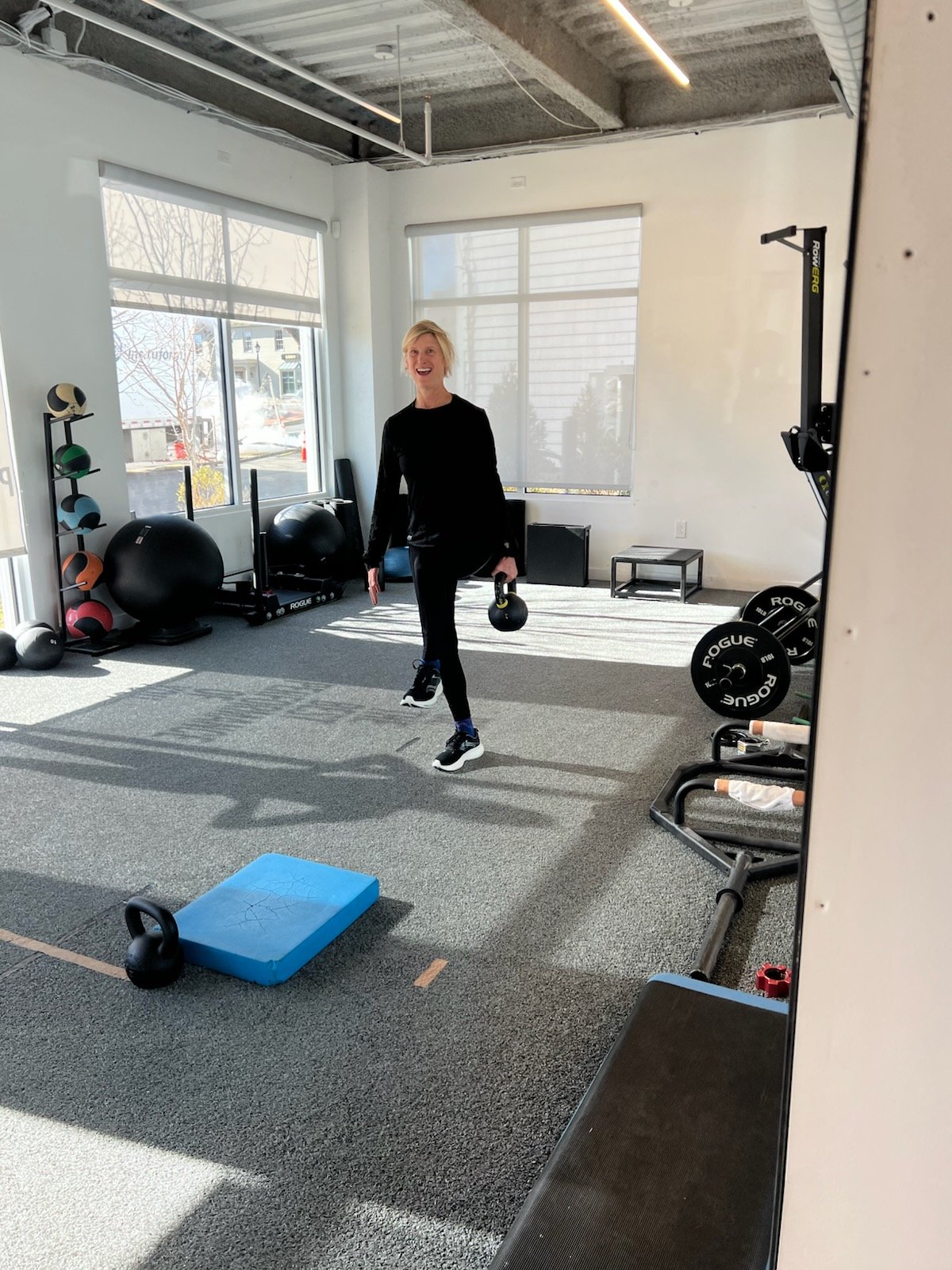Strong Enough to Summit: How the VITAL Training Program Gets You Adventure-Ready
Photo courtesy of Katie Libby hiking Harding Icefield, Seward, AK
Let’s Redefine Strength: It’s Not Just for the Gym
Let’s clear something up: strength and conditioning isn’t just for body builders or elite athletes—it’s for you, the everyday adventurer gearing up to hike the Grand Canyon, climb alpine trails in Alaska, or explore your local forest with confidence. At VITAL, we believe your training should match your goals—and your goals are bold.
The VITAL Training Program is built on real science and real-life application. Our aim isn’t six-pack abs (though that’s a nice bonus)—it’s helping you move better, hike longer, climb stronger, and recover faster. This program was created to help people do things they never thought they could do. Like hike 24 miles through the Grand Canyon. Or power through a 14-mile trail with a full pack. Or just feel strong doing the things they love.
What Is Strength & Conditioning—Really?
At its core, strength and conditioning is the practice of training your body to perform at its best, depending on the task ahead. In our case, that task isn’t just lifting weights—it’s:
Navigating technical terrain
Carrying a loaded pack for miles
Managing fatigue while staying mentally sharp
Staying injury-free through it all
To do that, we focus on three foundational principles:
1. Energy Systems: The Engine Behind Every Step
Every physical action requires energy—and your body has three main systems for delivering it:
Phosphagen System – Short, explosive bursts (think: hoisting your pack or charging up a steep incline)
Glycolytic System – Medium-duration, moderate efforts (like powering through hill repeats)
Oxidative System – Sustained, long-distance activity (hello, 14-mile summit day)
Why this matters: Most hikers only train their aerobic (oxidative) base. But VITAL trains all three systems to keep you versatile and prepared for whatever the trail throws at you—fast scrambles, long ascents, or a final push before dark.
2. Movement Patterns: Train Like You Move in Life
Forget complicated machines or random Instagram workouts. VITAL training builds strength through fundamental movements:
Squat – for climbing hills and getting low to tie those laces
Hinge – for powerful glutes and hamstrings (think: deadlifts)
Push & Pull – for shoulder strength and carrying your load
Carry – for real-world strength, like walking with a backpack
Rotate – for trail agility and core control
Why it matters: These patterns replicate what you actually do on the trail. Instead of just looking strong, you’ll be strong—functionally, confidently, and safely.
Strength & Conditioning for the Trail
Single-Leg Balance, progressing to the Suitcase March, builds balance and core stability—key for hikers learning to manage their center of gravity on uneven terrain.
3. Progressive Overload: How Real Strength is Built
Progressive overload is simple: challenge your body just a little more each time.
This might look like:
Adding a few more reps or seconds to a plank
Increasing the weight in your backpack on a prep hike
Tackling steeper terrain over time
Why this matters: Your body adapts to what it’s asked to do. Ask more of it—gradually and consistently—and it will respond. This is how you become someone who finishes strong instead of burning out halfway through.
Recovery: Where the Magic Actually Happens
You don’t get stronger during training—you get stronger while you recover from it. That’s why we build recovery into every VITAL program with smart strategies:
Hydration: Water + electrolytes = happy muscles and joints
Sleep: Your body repairs itself while you sleep—7–9 hours is non-negotiable (I know, easier said than done).
Stress Management: Learn to balance eustress (training) with distress (life stuff). Better fitness means better resilience.
Ask yourself: Am I giving my body enough time and tools to recover? VITAL Adventure Experts provide solid tips and strategies to help team members get there.
Injury Prevention: Train Smart, Stay Wild
We don’t believe in training through pain—we train to prevent it. Common hiking-related injuries include:
Knee pain (hiker’s knee): Strengthen your quads, glutes, and core
Ankle sprains: Improve balance and proprioception—your body’s ability to sense position and movement through single-leg exercises. This helps you react quickly on uneven terrain and stay steady on the trail.
Low back pain: Improve core stability and pack-fitting techniques
We build injury prevention right into the workouts—because no one wants to be sidelined 3 weeks before summit day.
The 12-Week VITAL Blueprint: Your Path to Peak Readiness
Our 3-phase, 12-week program progresses intentionally:
Full-body strength (3x/week)
Mobility-focused warm-ups
Core work baked into every session
Designed for real people training for real adventures
Each workout builds the skills, stamina, and strength you’ll need when you hit the trail.
Final Thought: Why VITAL? Because You’re Training for More Than Just a Hike
Because you're not just training for a hike—you're training for a life of adventure. This program helps you build the kind of durable, capable, long-lasting strength that empowers you to say yes more often. Yes to the trail. Yes to the summit. Yes to the full, bold life you want to live.
Want to learn more? Reach out to contact@vitalventures.live, visit vitalventures.live or follow @Live_Vital_ on Instagram for workouts, trail tips, and community stories. Let’s go!


